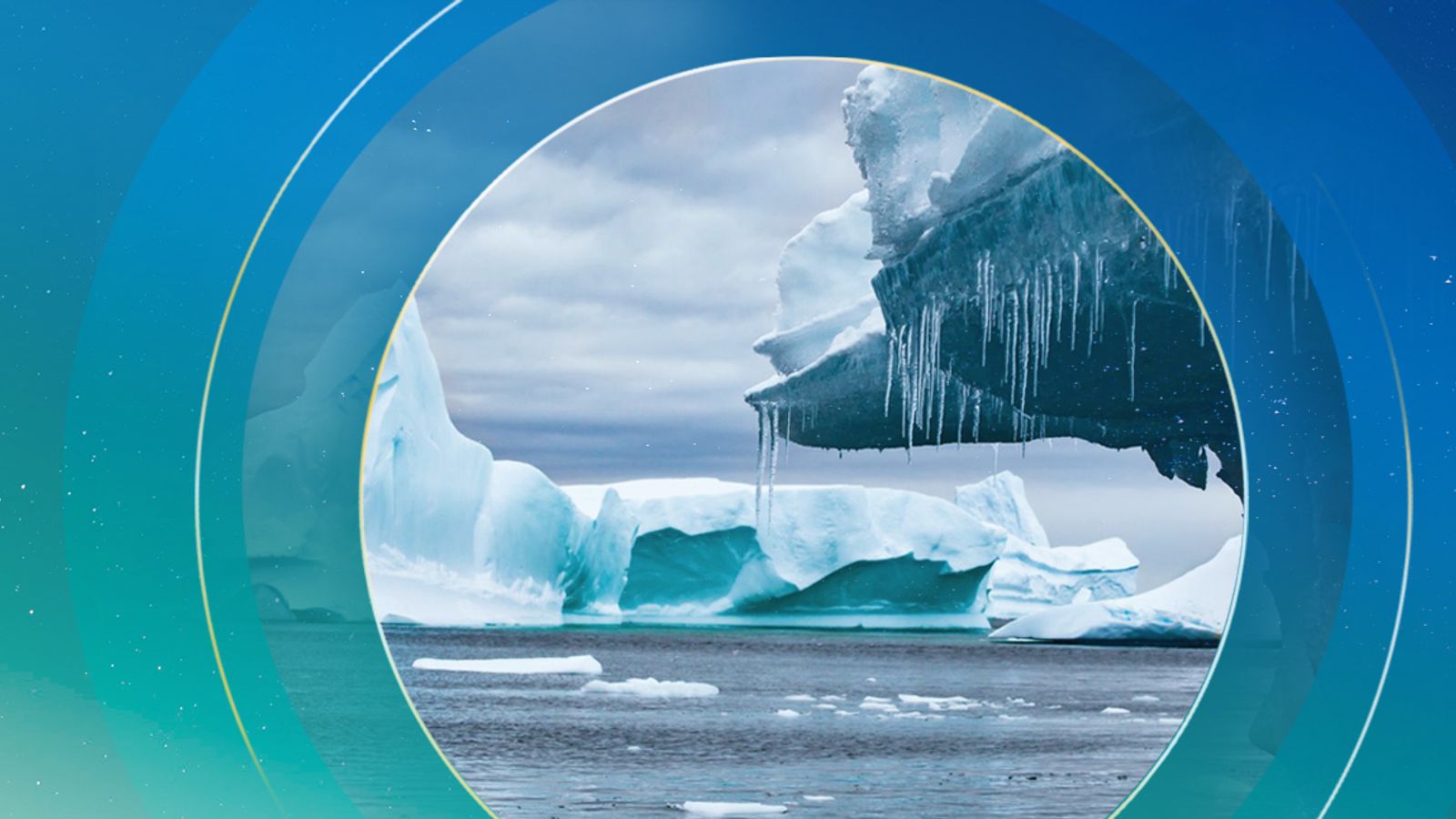Sea levels rose to a new high while the past seven years are set to be the warmest on record, a UN climate report has found.
Released on the same day COP26 begins in Glasgow, the World Meteorological Organisation’s (WMO) provisional report on the state of the global climate in 2021 paints an abysmal picture.
UN Secretary General Antonio Guterres said the report shows how our planet “is changing before our eyes” and illustrates how ecosystems and communities “are being devastated”.
“COP26 must be a turning point for people and planet,” he said.
“Scientists are clear on the facts. Now leaders need to be just as clear in their actions. The door is open; the solutions are there.
“COP26 must be a turning point. We must act now – with ambition and solidarity – to safeguard our future and save humanity.”
WMO Secretary General Professor Petteri Taalas said COP26 is a “make or break opportunity to put us back on track” as he said the current rate of greenhouse gas concentrations will push temperature increases “far in excess” of 1.5C to 2C above pre-industrial levels.
COP26: G20 leaders commit to carbon neutrality ‘by or around 2050’ – and fail to set target to phase out coal domestically
COP26: Prince Charles tells G20 world leaders the ‘future of humanity and nature herself are at stake’
COP26: Alok Sharma sets UK govt’s tone for climate change summit demanding ‘every country’ steps up
The report, combining data from multiple UN agencies, meteorological services and scientific experts from January to the end of September, found:
Greenhouse gases
• Record greenhouse gas concentrations reached in 2020 have continued in 2021
• Carbon dioxide was 149% higher than pre-industrial (1750) levels, methane 262% higher and nitrous oxide 123% higher
Temperatures
• The global mean temperature for 2021 was 1.09C above the 1850-1900 average
• 2021 was the sixth or seventh warmest year on record globally – but that may change by the end of the year
• 2015 to 2021 will be the seven warmest years ever
• 2021 was less warm than recent years due to a La Niña early in the year that had a temporary cooling effect (the last significant La Niña was 2011 but 2021’s was 0.18C to 0.26C warmer)
Oceans
• Most of the oceans experienced at least one “strong” marine heatwave in 2021 – the Laptev and Beaufort Sea in the Arctic experienced “severe” and “extreme” marine heatwaves from January to April 2021
• The ocean is becoming more acidic as it absorbs carbon dioxide, and therefore less able to absorb CO2 – 2021 saw the lowest pH level for at least 26,000 years
Sea level
• Between 2013 and 2021 sea levels have doubled compared with the rise from 1993 to 2002
• There have been 4.4mm rises every year in the last eight years due to loss of ice mass from glaciers and ice sheets – and it continues to rise
Please use Chrome browser for a more accessible video player
Sea ice
• The first half of July saw a record low in sea ice as the Arctic sea ice melted rapidly before a slowdown in August
• September – where there is usually the smallest amount of melt after the summer – saw greater melts than recent years of 4.72 million km2 (1.82m2)
• Sea ice in the East Greenland Sea was at its lowest levels ever in 2021 “by a large margin”
Glaciers and ice sheets
• An exceptionally warm, dry summer meant Western North America’s mountain glaciers “took a brutal toll”, with mass loss of the continent’s glaciers nearly doubling from 2015-19 compared with 2000-2004
• Greenland Ice Sheet melt was close to the long-term average up to early summer but temperatures and meltwater runoff were “well above normal” in August
• Rain fell for the first time ever, for several hours, at the Greenland Ice Sheet summit in August and air temperatures were above freezing for nine hours
Extreme weather
• Canada’s national highest temperature record was broken in June by 4.6C when Lytton in British Columbia reached 49.6C, causing devastating fires
• The continental US had its hottest summer on record, with Death Valley in California reaching 54.4C in July – equalling a similar 2020 value as the highest world record since at least the 1930s
• California had the largest single fire on record – the Dixie fire that burned for nearly a month in July and October and destroyed 390,000 hectares
Please use Chrome browser for a more accessible video player
• A European record was set in Sicily on 11 August at 48.8C, Kairouan in Tunisia reached a record 50.3C and Montoro in Spain set a national record of 47.4C
• Turkey and Georgia had record hottest days of 49.1C and 40.6C respectively, with major wildfires across eastern and southern Europe
• The central United States and northern Mexico had abnormally cold conditions in February, with Texas seeing its lowest temperatures since at least 1989
Precipitation
• Zhengzhou in east central China’s Henan province had a national record of 201.9mm of rainfall in one hour
• Western Europe experienced some of its most severe flooding on record in July, with western Germany and eastern Belgium receiving 100 to 150mm over two days on already saturated ground
• Persistent high rainfall led to the Rio Negro in Brazil’s Manaus region experiencing record levels
• “Significant” drought affected most of subtropical South America for the second year in a row, leading to damage to much of Brazil’s coffee-growing regions
• The southwestern United States had its driest ever period from January 2020 to August 2021 – more than 10% below the previous record
• Wheat and canola crop production for Canada in 2021 is forecast to be 30-40% below 2020 levels
Attribution
• Preliminary studies on what caused heatwaves in northwest America found heatwaves are “still rare or very rare…but would have been virtually impossible without climate change”
• Studies on floods in western Europe in July found the heavy rainfall “had been made more likely by climate change”
• The frequency of heatwaves in North America and the Mediterranean has increased – the human contribution in North America was found with “medium confidence” and “high confidence” in the Mediterranean
Socio-economic and environmental impacts
• After a peak in undernourishment in 2020 (768 million people), projections indicate a decline of 9% in global hunger this year to around 710 million
• But, as of October 2021, the numbers in many countries were already higher than in 2020
• In groups already suffering from food crises, there was an increase of 19% more people suffering from hunger
• A growing number of people (584,000) are facing starvation and a total collapse of livelihoods, mostly in Ethiopia, South Sudan, Yemen and Madagascar
Subscribe to ClimateCast on Spotify, Apple Podcasts, or Spreaker
• Consecutive droughts across Africa, Asia and Latin America have coincided with severe storms, cyclones and hurricanes, badly affecting livelihoods and the ability to recover
• Extreme weather events and conditions – exacerbated by climate change – have had major impacts on population displacement and the vulnerability of people, from Afghanistan to Central America
• Ecosystems are degrading at an “unprecedented rate”, therefore limiting their ability to support humans and build resilience
For full coverage of COP26 watch Climate Live on Sky channel 525.
Follow live coverage on web and app with our dedicated live blog.
Get all the latest stories, special reports and in depth analysis at skynews.com/cop26






















